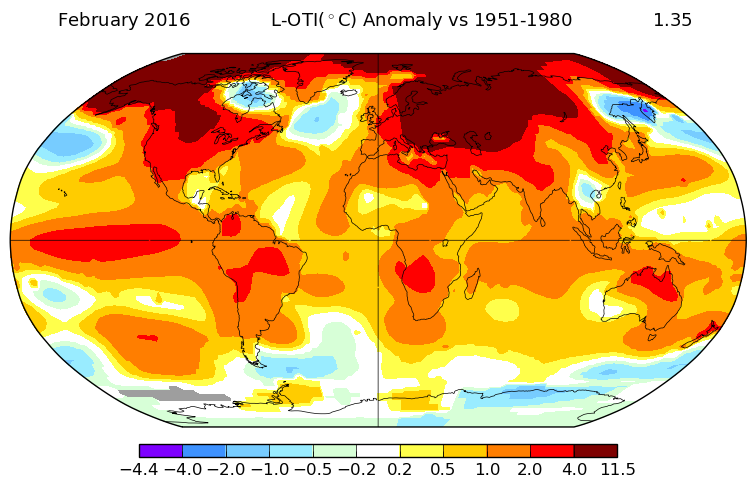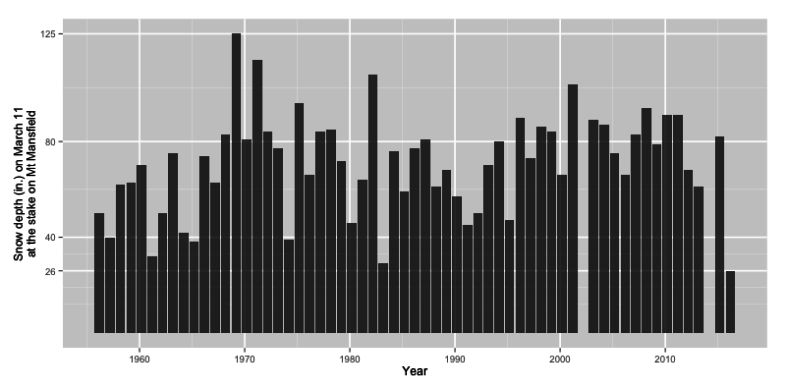February 2016 was the most abnormally warm month ever recorded on our planet, running a full 1.35 degrees Celsius above the 1951-1980 average used as a baseline in measuring climate change. The data released by NASA are still preliminary – final numbers will be released in April, although Japan’s Meteorological Agency has already released similar findings – but are so extraordinary that they have been written about widely.

Average global surface temperature in February was 1.35 degrees Celsius above normal according to data released by NASA.
Our warm February falls right on the heels of an anomalously warm stretch dating back to October. Indeed, the top five most unusually warm months ever recorded are last month, January 2016, December 2015, November 2015, and October 2015. These months aren’t as absolutely warm as the all-time record set in July 2015 – global surface temperatures are nearly always warmest in July and August – but they are ominous because they suggest that we are already approaching the limits on temperature set in the Paris Agreement on Climate Change. The main goal set by the agreement was to limit temperature rise to less than 2 degrees Celsius above pre-industrial levels by the end of the century, and to work towards limiting that rise to 1.5 degrees Celsius.
February 2016 was 1.35 degrees Celsius above the 1951-1980 baseline, which itself is 0.3 degrees Celsius above pre-industrial levels. February 2016 therefore was somewhere between 1.5 and 2.0 degrees Celsius above pre-industrial levels, meaning that we have, at least temporarily, come up against our goal of limiting temperature rises to no more than 2.0 degrees Celsius. The very strong El Niño conditions explain some, but not all and perhaps relatively little, of the unusual warmth; the rest can be laid squarely at the foot of anthropogenic disruption of the climate.
We here in Vermont and most of New England have felt fully the implications of this odd stretch of weather. Ski areas have struggled mightily with the lack of snow and cold weather; snow depth at the stake on Mount Mansfield this past Saturday was as low as it has been since record-keeping began in 1954.

Snow depth at the Stake on Mount Mansfield on 11 March in each year from 1954 – 2016. Snow depth in 2016 – 26″ – is the lowest on record.
Some plants and animals seem to be responding to the lack of winter; an Eastern Phoebe and American Woodcocks in Danby, Vermont on March 5th were notably early. How other organisms that may be affected by a short winter and an early spring – Snowshoe Hares or long-distance migrant birds, for example – remains to be seen.
